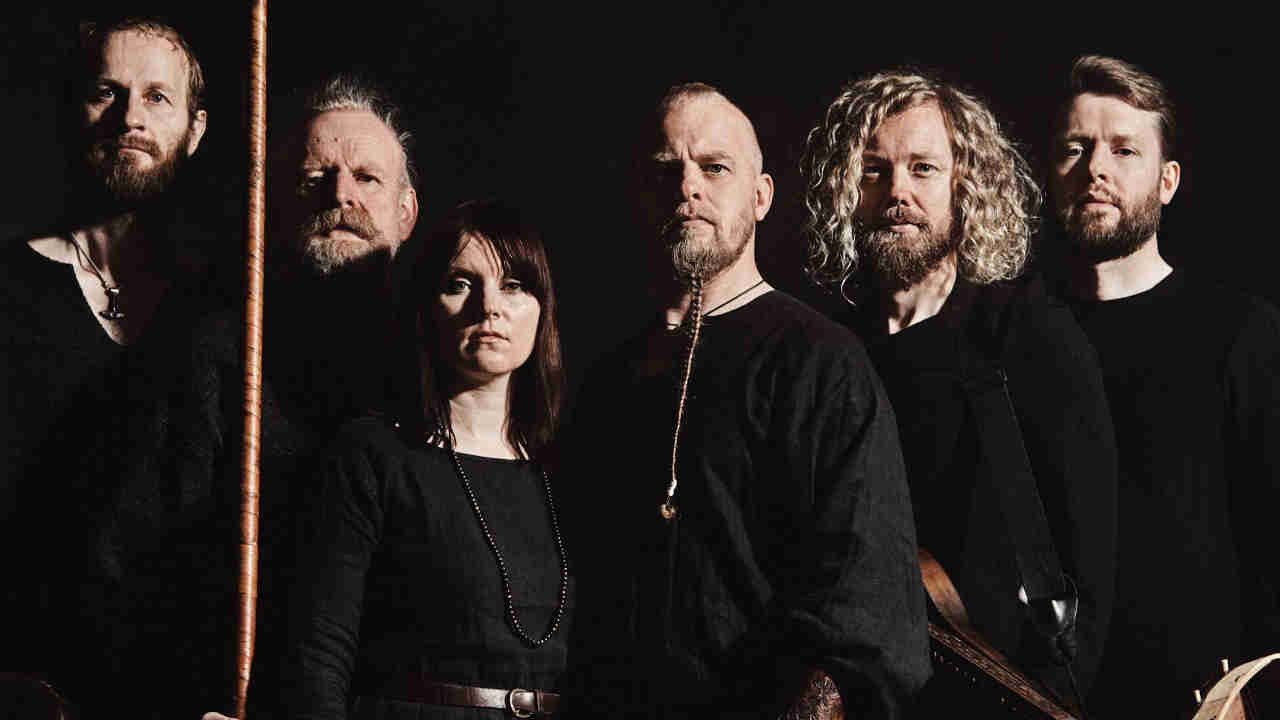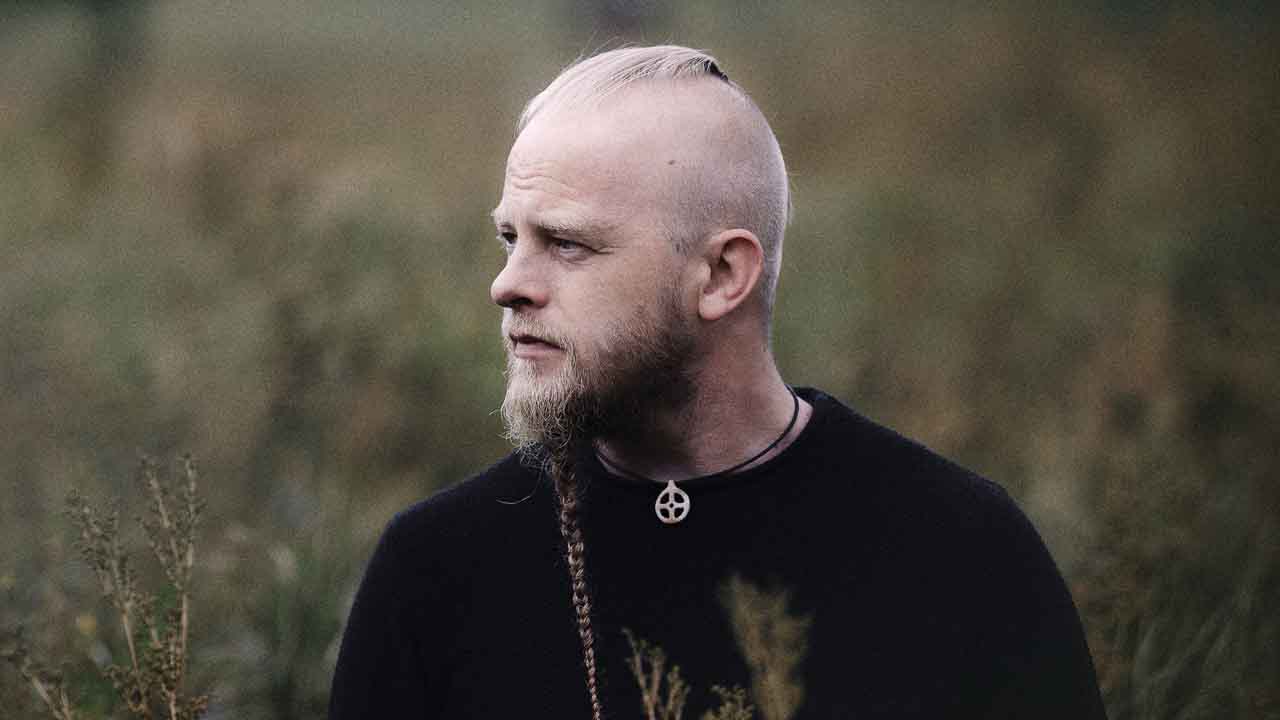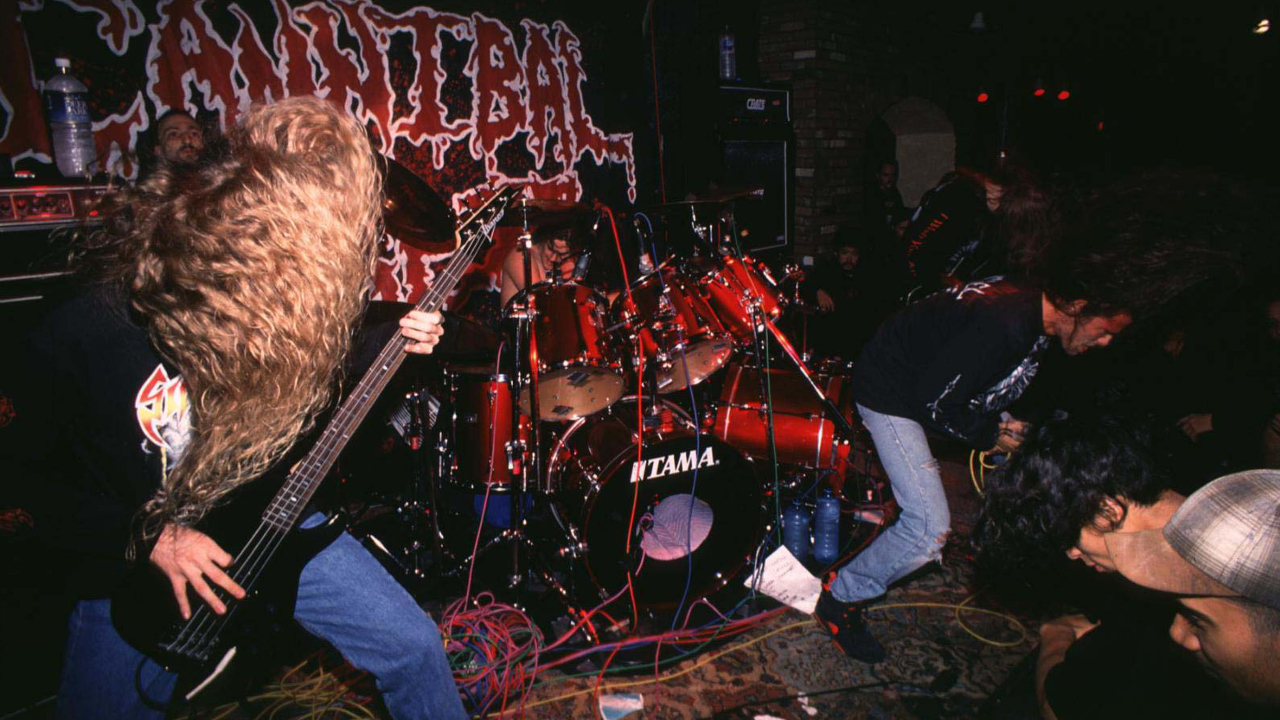Runes, ravens and sorcery: how pagan-folk mystics Wardruna are bringing the old ways back
Wardruna may have soundtracked the TV show Vikings, but their music goes deeper than battleaxes and longships

Einar Selvik poured his heart and soul into Wardruna’s Runaljod trilogy of albums. Each explored a set of eight runes from the Elder Futhark – the earliest runic alphabet, in which every character symbolises a trait as well as a letter and a spoken sound. They took the listener on an immersive journey from creation to rebirth via drones, drumbeats and other primal sounds created by traditional instruments, alongside the natural noises of trees, stones and animals.
This doesn’t all have to be spiritual or religious: it’s an attitude.
Einar Selvik
It was the expression of a yearning the Norwegian had felt since discovering the runes as a teenager, and something that had called him away from his previous life as the drummer in black metallers Gorgoroth, catapulting him to the forefront of a neo-pagan folk-metal movement. And in 2016, his mission was complete.
“It was a 15-year-old creative bubble, and a really intense part of my life,” he explains today over a Zoom call. “Coming out of a bubble like that has a duality to it. There is an element of relief, and being proud and happy about overcoming all the challenges, but also an element of sorrow. I think everyone can relate to that, when you’re really intensively working on something, and then it’s over. It becomes a void, very often.”
The challenge Einar faced was how to fill that void. Although he released 2018’s Skald – an acoustic record including stripped-down versions of Wardruna songs – he spent months trying to make a decision about what to write about next, knowing it needed to come from a place that felt genuine. The result is Kvitravn, or ‘White Raven’ - a dramatic and moving new album that “walks in the same kind of universe” as its predecessors but zooms into the detail of our relationship with nature. People are longing to feel connected to nature, he thinks. The problem is that we’ve stopped regarding it as “sacred”, losing touch with our traditions and trying to control it.

“I think it started way before that,” he says. “One of the reasons why I’m not very interested in the Viking Age, for instance – on a personal level I don’t find it very fascinating – is because it was also a time when I feel people were losing their way on so many levels. There were a lot of changes within these nature-based traditions; the deities connected to the Earth changed with deities that you could bring on your ships and into war. And they became much more about wealth and fame, and more material, I would say.
“But I guess it’s also a natural mechanism. In modern paganism, we have this very romantic idea of nature that is based on a contemporary need. But in earlier times, they were fighting nature. They did whatever they could to control it, in order to survive. And I guess that started going too far.”
It’s crazy to hear him slam the Viking Age, when he’s a known scholar who has even written music for TV hit Vikings, but the song Grá (‘Gray’) illustrates his point. Opening with howls, it invites wolves to come back into the spaces we’ve taken for ourselves (‘I remember when we roamed together… always wary about you, and you about me… lead your pack to my valleys’).
Sign up below to get the latest from Metal Hammer, plus exclusive special offers, direct to your inbox!
“That’s a very good example of it, but also reflecting that if something has a true value, it has a cost. And there is definitely a cost with having predators roaming around our modern society. It’s not like I say, ‘Ooh, wolves are so beautiful’ - it’s not like I don’t recognise the problem. It’s just that I don’t think eradicating a species for our own comfort is the right solution,” he says. “There has to be a better solution.”
When we ask Einar how far back we need to go to find examples of being synched up with nature, he drops into academic mode. It’s difficult, he says, because our history is so fragmented with people migrating and cultures merging across thousands of years. But there’s a wealth of material from the Viking Age that allows people to play detective and work out how certain traditions might have evolved, dating back to the Bronze Age, about 4,000-6,000 years ago. One important Nordic tradition is animism – the belief that every living thing has a resonance. It’s something Einar opens himself up to when writing songs, often walking in nature and observing his responses – a process he’s documented on Viseveiding, or ‘Song-hunting’. Opening with a cry from longtime singer Lindy-Fay Hella, it descends into an impassioned gallop.
“Sometimes I actively go out, hunting songs or hunting answers or throwing out questions to whoever might listen!” he enthuses. “Just opening my senses. Animism is the idea that everything has a… well, some would say a spirit or soul, and some would say frequency or energy. I guess it’s about tuning into these things, because we ourselves have a frequency as well. And I do strongly believe in the potential of connecting to other frequencies, that are not the predominant factor in our consciousness.”
Einar also believes in sorcery. Not the Hollywood version of waving a magic wand around and seeing instantaneous results, but in the strength of oral traditions, alluded to in hypnotic songs such as Ni (‘Nine’) and ‘Vindavlarljod’ (Song Of The Wind-Bred), which describe rituals tied to the earth and the Nine Norns – women who control destiny.
“There is a logic behind it,” he says. “One that is perhaps not the way it’s been portrayed in movies. You have to think of the context many of these things were born out of. Like for instance, the power of words, which was such an important part in the old oral society, so imagine how interwoven with intention and spiritual aspect they were. It would affect you in a completely different way. But if we move into modern days, it’s a known fact that singing in a special way activates certain glands that make you produce endorphins. Sound has an effect. I can change the atmosphere in a room by using my voice, for instance. That’s sorcery.”
Talking to Einar is sometimes a headfuck. He’s spent years studying Nordic culture, ruminating on its various facets, meditating on their meanings, and even indulging in “method composing” - such as venturing into the frozen wilderness barely clothed, in order to put himself into uncomfortable creative headspaces to make art. This isn’t just music – it’s a way of life.
I am the singer of songs that hope the songs can be a bridge to change.
Einar Selvik
For a layperson, it can be tough to follow the intellectual threads that run through the tapestry of his mind. But he’s also warm and down-to-earth, keen to demystify intimidating academic concepts and back up his ideas with science and rational thinking. This is one of the qualities that makes Wardruna’s music so good: even if you can’t decode every layer of myth and philosophy, it’s written so you can instinctively feel its intent.
The album title, ‘White Raven’, sounds beautiful in itself, but also bears special meaning. “The raven is an important figure in Norse mythology, and judging from the myths of Odin’s ravens, it’s seen as both a messenger and a bridge between the worlds, but also as the animal personification of the human mind and memory,” Einar explains. “And then sacred white animals often represent some form of renewal. So combining these symbols felt like a very powerful symbol.”
In other words, by ‘remembering’ those nature-based traditions we previously used to define ourselves, we can perhaps improve our present circumstances. It’s no coincidence that ‘Kvitravn’ has long been Einar’s artist name, too. We can’t think of a better spiritual messenger.
“The album is not named after me – it’s more the ideas that led me to take the name itself,” he says. “But yes, I am the singer of songs that I hope can be that bridge to change.”

Eleanor was promoted to the role of Editor at Metal Hammer magazine after over seven years with the company, having previously served as Deputy Editor and Features Editor. Prior to joining Metal Hammer, El spent three years as Production Editor at Kerrang! and four years as Production Editor and Deputy Editor at Bizarre. She has also written for the likes of Classic Rock, Prog, Rock Sound and Visit London amongst others, and was a regular presenter on the Metal Hammer Podcast.
